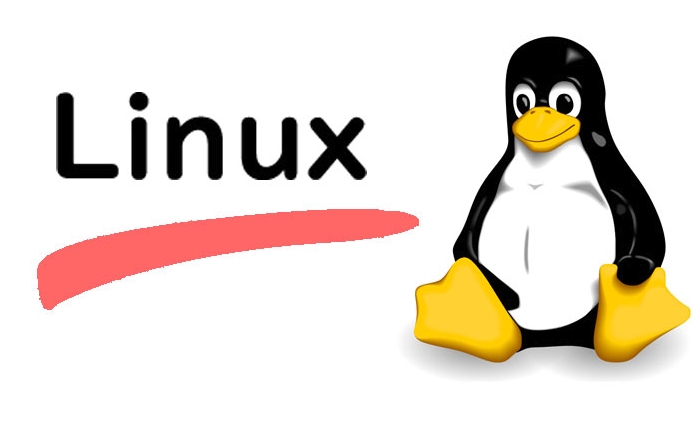The Importance of Time Synchronization on Linux with NTP
Aug 01, 2025 am 06:00 AMTime synchronization is crucial for system reliability and security because inconsistent time causes log confusion, security failures, misfired scheduled tasks, and distributed system errors; 1. Check NTP status using timedatectl status to confirm synchronization and service activity; 2. Enable and start chronyd with systemctl, then verify sync using chronyc tracking and chronyc sources -v; 3. Configure trusted time servers like pool.ntp.org with iburst in /etc/chrony.conf for faster syncing; best practices include avoiding manual time changes, using continuous daemons like chronyd instead of ntpdate, monitoring drift especially in VMs, securing internal NTP servers, and considering PTP for sub-millisecond precision needs—maintaining accurate time prevents cascading system issues and ensures consistent, secure operations.

Keeping time accurate across systems is more important than it might first appear—especially in Linux environments where logging, security, and distributed operations depend on precise timing. One of the most reliable ways to maintain accurate system time is through the Network Time Protocol (NTP). Here's why time synchronization matters and how NTP plays a crucial role.

Why Time Synchronization Matters
Inconsistent or incorrect system time can lead to a surprising number of issues:
- Log file confusion: When troubleshooting across multiple servers, logs with mismatched timestamps make it nearly impossible to trace events in the correct order.
- Security problems: Kerberos, SSL/TLS certificates, and other authentication mechanisms rely heavily on accurate time. Even a few minutes’ drift can cause authentication failures or allow replay attacks.
- Scheduled tasks misfire: Cron jobs may not run as expected if the system clock jumps forward or backward.
- Distributed systems break: Databases, clustered applications, and container orchestration platforms (like Kubernetes) require synchronized clocks to maintain consistency and avoid race conditions.
Without proper time sync, even a well-configured system can behave unpredictably.

How NTP Works on Linux
NTP is a protocol designed to synchronize clocks across computer networks with high precision. On Linux, NTP is typically managed by a daemon such as ntpd, chronyd, or systemd-timesyncd.
Here’s a simplified view of how it works:

- The NTP client contacts one or more NTP servers (often public pools like
pool.ntp.orgor internal corporate time servers). - It measures network latency and adjusts the system clock gradually to avoid abrupt jumps.
- It continuously monitors clock drift and makes small corrections to maintain accuracy—often within milliseconds of UTC.
Modern implementations like chrony (commonly used in RHEL/CentOS 8 and Ubuntu) are especially good at handling intermittent connectivity and virtualized environments.
Setting Up NTP on a Linux System
Most Linux distributions come with some form of NTP support pre-installed, but you should verify and configure it properly.
1. Check if NTP is active
timedatectl status
Look for:
System clock synchronized: yes NTP service: active
If not active, you’ll need to enable it.
2. Use chrony or ntpd (recommended setup)
On many modern systems, chrony is preferred:
sudo systemctl enable chronyd sudo systemctl start chronyd
Check synchronization:
chronyc tracking chronyc sources -v
These commands show how well your system is synced and which time sources it's using.
3. Configure reliable time servers
Edit /etc/chrony.conf (or /etc/ntp.conf if using ntpd) to include trusted servers:
server 0.pool.ntp.org iburst server 1.pool.ntp.org iburst server 2.pool.ntp.org iburst server 3.pool.ntp.org iburst
The iburst option speeds up initial synchronization.
For better security and performance, consider setting up an internal NTP server for your network that syncs to external sources, and have all internal machines sync to it.
Best Practices for NTP on Linux
- Avoid manual time changes: Let NTP handle adjustments. Manually setting the clock can disrupt services and cause issues with time-sensitive applications.
-
Use
ntpdorchronyd, not justntpdate: Older scripts that usentpdateperform one-time syncs and don’t handle ongoing drift. These are deprecated in favor of continuous daemons. -
Monitor time drift: Especially in virtual machines, where hypervisor clock issues can cause drift.
chronyhandles this better than olderntpdin many cases. - Secure your NTP setup: Use authenticated NTP or restrict access if you’re running an internal time server. Consider using PTP (Precision Time Protocol) for sub-millisecond needs (e.g., financial systems).
Final Thoughts
Time synchronization might seem like a minor detail, but it’s a foundational part of system reliability and security. Using NTP—or its modern equivalents like chrony—ensures your Linux systems stay in sync, logs remain trustworthy, and distributed applications function correctly.
Basically: don’t ignore the clock. A second out of sync can cause hours of debugging.
The above is the detailed content of The Importance of Time Synchronization on Linux with NTP. For more information, please follow other related articles on the PHP Chinese website!

Hot AI Tools

Undress AI Tool
Undress images for free

Undresser.AI Undress
AI-powered app for creating realistic nude photos

AI Clothes Remover
Online AI tool for removing clothes from photos.

Clothoff.io
AI clothes remover

Video Face Swap
Swap faces in any video effortlessly with our completely free AI face swap tool!

Hot Article

Hot Tools

Notepad++7.3.1
Easy-to-use and free code editor

SublimeText3 Chinese version
Chinese version, very easy to use

Zend Studio 13.0.1
Powerful PHP integrated development environment

Dreamweaver CS6
Visual web development tools

SublimeText3 Mac version
God-level code editing software (SublimeText3)

Hot Topics
 How to adjust mysql into Chinese interface? Easy to set the Chinese language environment of mysql
Jun 04, 2025 pm 06:36 PM
How to adjust mysql into Chinese interface? Easy to set the Chinese language environment of mysql
Jun 04, 2025 pm 06:36 PM
To tune MySQL into a Chinese interface, it can be implemented through MySQLWorkbench or command line tools. 1) In MySQLWorkbench, open "Preferences", select the "Appearance" tab, and then select "Chinese(Simplified)" in the "Language" drop-down menu, and restart. 2) When using command line tools, set the operating system locale variables, such as using "exportLANG=zh_CN.UTF-8" on Linux or macOS, and then run the mysql client.
 How does resource usage (CPU, memory) differ between Linux and Windows?
Jun 05, 2025 am 12:13 AM
How does resource usage (CPU, memory) differ between Linux and Windows?
Jun 05, 2025 am 12:13 AM
Linux and Windows have their own advantages and disadvantages in CPU and memory usage: 1) Linux uses time slice-based scheduling algorithms to ensure fairness and efficiency; Windows uses priority scheduling, which may cause low-priority processes to wait. 2) Linux manages memory through paging and switching mechanisms to reduce fragmentation; Windows tends to pre-allocate and dynamic adjustment, and efficiency may fluctuate.
 How does the cost of ownership differ between Linux and Windows?
Jun 09, 2025 am 12:17 AM
How does the cost of ownership differ between Linux and Windows?
Jun 09, 2025 am 12:17 AM
Linux's cost of ownership is usually lower than Windows. 1) Linux does not require license fees, saving a lot of costs, while Windows requires purchasing a license. 2) Linux has low hardware requirements and can extend the service life of the device. 3) The Linux community provides free support to reduce maintenance costs. 4) Linux is highly secure and reduces productivity losses. 5) The Linux learning curve is steep, but Windows is easier to use. The choice should be based on specific needs and budget.
 How does the performance of I/O operations differ between Linux and Windows?
Jun 07, 2025 am 12:06 AM
How does the performance of I/O operations differ between Linux and Windows?
Jun 07, 2025 am 12:06 AM
LinuxoftenoutperformsWindowsinI/Operformanceduetoitscustomizablekernelandfilesystems,whileWindowsoffersmoreuniformperformanceacrosshardware.1)LinuxexcelswithcustomizableI/OschedulerslikeCFQandDeadline,enhancingperformanceinhigh-throughputapplications
 How to install Linux alongside Windows (dual boot)?
Jun 18, 2025 am 12:19 AM
How to install Linux alongside Windows (dual boot)?
Jun 18, 2025 am 12:19 AM
The key to installing dual systems in Linux and Windows is partitioning and boot settings. 1. Preparation includes backing up data and compressing existing partitions to make space; 2. Use Ventoy or Rufus to make Linux boot USB disk, recommend Ubuntu; 3. Select "Coexist with other systems" or manually partition during installation (/at least 20GB, /home remaining space, swap optional); 4. Check the installation of third-party drivers to avoid hardware problems; 5. If you do not enter the Grub boot menu after installation, you can use boot-repair to repair the boot or adjust the BIOS startup sequence. As long as the steps are clear and the operation is done properly, the whole process is not complicated.
 How to enable the EPEL (Extra Packages for Enterprise Linux) repository?
Jun 17, 2025 am 09:15 AM
How to enable the EPEL (Extra Packages for Enterprise Linux) repository?
Jun 17, 2025 am 09:15 AM
The key to enabling EPEL repository is to select the correct installation method according to the system version. First, confirm the system type and version, and use the command cat/etc/os-release to obtain information; second, enable EPEL through dnfinstallepel-release on CentOS/RockyLinux, and the 8 and 9 version commands are the same; third, you need to manually download the corresponding version of the .repo file and install it on RHEL; fourth, you can re-import the GPG key when encountering problems. Note that the old version may not be supported, and you can also consider enabling epel-next to obtain the test package. After completing the above steps, use dnfrepolist to verify that the EPEL repository is successfully added.
 How does Linux perform compared to Windows for web server workloads?
Jun 08, 2025 am 12:18 AM
How does Linux perform compared to Windows for web server workloads?
Jun 08, 2025 am 12:18 AM
Linux usually performs better in web server performance, mainly due to its advantages in kernel optimization, resource management and open source ecosystem. 1) After years of optimization of the Linux kernel, mechanisms such as epoll and kqueue make it more efficient in handling high concurrent requests. 2) Linux provides fine-grained resource management tools such as cgroups. 3) The open source community continuously optimizes Linux performance, and many high-performance web servers such as Nginx are developed on Linux. By contrast, Windows performs well when handling ASP.NET applications and provides better development tools and commercial support.
 How to choose a Linux distro for a beginner?
Jun 19, 2025 am 12:09 AM
How to choose a Linux distro for a beginner?
Jun 19, 2025 am 12:09 AM
Newbie users should first clarify their usage requirements when choosing a Linux distribution. 1. Choose Ubuntu or LinuxMint for daily use; programming and development are suitable for Manjaro or Fedora; use Lubuntu and other lightweight systems for old devices; recommend CentOSStream or Debian to learn the underlying principles. 2. Stability is preferred for UbuntuLTS or Debian; you can choose Arch or Manjaro to pursue new features. 3. In terms of community support, Ubuntu and LinuxMint are rich in resources, and Arch documents are technically oriented. 4. In terms of installation difficulty, Ubuntu and LinuxMint are relatively simple, and Arch is suitable for those with basic needs. It is recommended to try it first and then decide.






